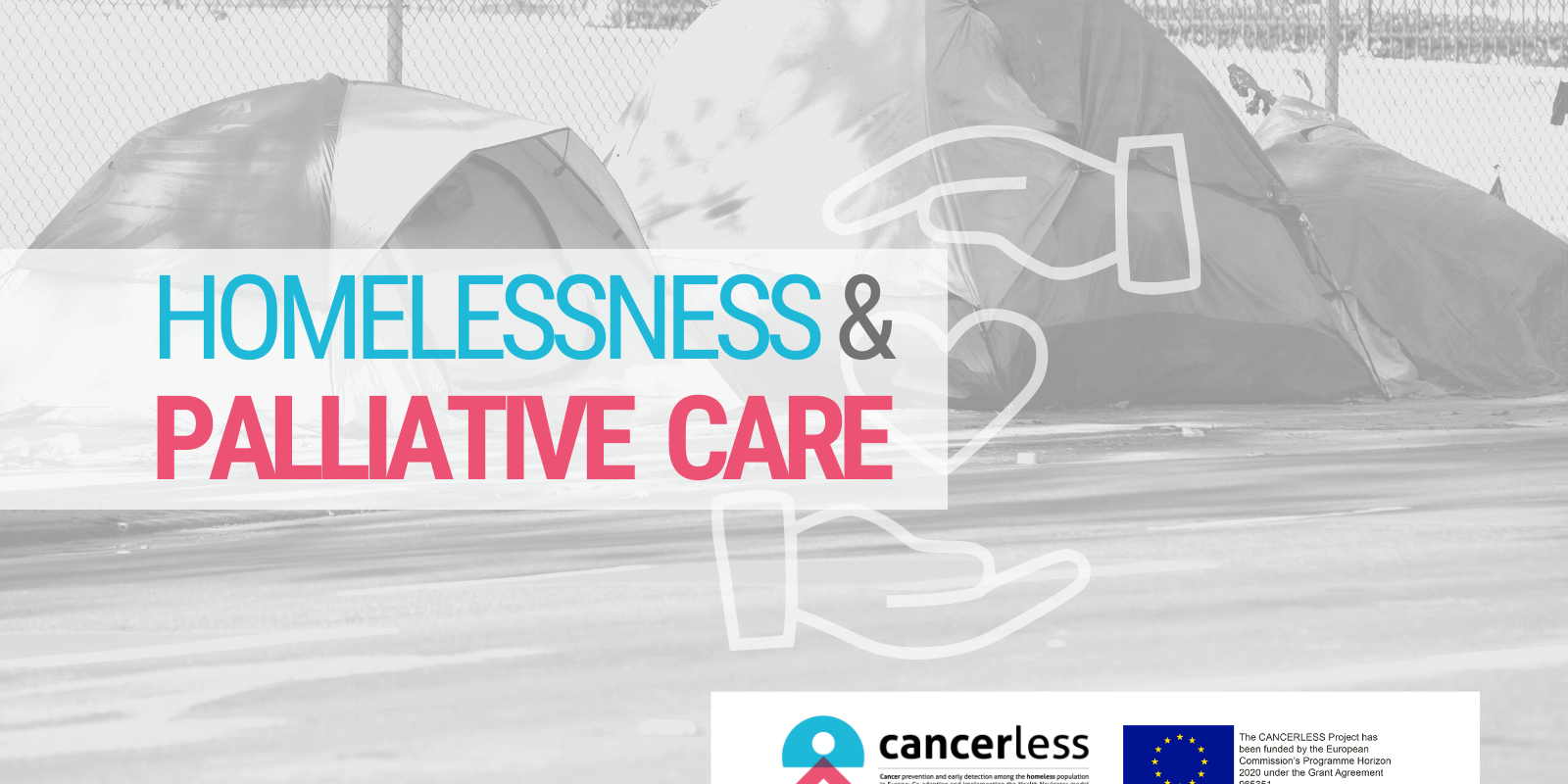Many persons experiencing homelessness (PEH) suffer from chronic and irreversible conditions and multimorbidities, such as cancer, HIV or liver cirrhosis, which entail a clear deterioration in the health status and welfare, especially if they are not effectively treated and managed. Persons with these diagnoses can clearly be benefited from palliative care services, which are aimed to improve the quality of life by preventing and addressing suffering at emotional, physical or spiritual levels.
There is previous evidence (e.g. Bagget et al., 2010) of the unmet health needs and low access to different health and care services by PEH and this has been, again, reinforced through the work done at the CANCERLESS project (Carmichael et al., in press). For instance, in comparison with people with homes, PEH visit less GPs at primary care centres (Eavis, 2018) but they suffer more hospital admissions and longer hospital stays (Russolillo et al., 2016).
No official statistics or data have been found about the use of palliative care services by PEH. A qualitative study performed in the Netherlands sheds light on that, stating that palliative care for PEH is mainly characterized by late provision and access, lack of acceptance by patients, unpredictable disease processes or the lack of specific facilities providing palliative care for them (de Veer et al., 2018). Additionally, according to the review done by Klop et al. (2018), an important barrier for PEH to access palliative care is the limited knowledge and skills of professionals. Luckily, there are online tools that can support health and care professionals with this lack of skills, such as:
- Caring for people experiencing homelessness in palliative care
- Homeless palliative Care Toolkit
- Pathway’s learning resources
All these barriers for the access to services and the lack of knowledge from clinical staff about the different trajectories of chronic diseases and multimorbidities in such a specific profile as PEH derive in a lack of validity, utility and applicability of many of the tools and processes that are currently used for the early detection of patients that can benefit from a palliative care treatment. This is the case of the ‘surprise question’ (“Would I be surprised if this patient were to die within the next 12 months?”) which is an intuitive holistic assessment partially based on clinical experience. But, how this tool can be correctly implemented over a patient of whom the clinician does not have clear knowledge? The same happens with those technology-based solutions with the support of Artificial Intelligence (AI) methods, such as the predictive models (e.g. Blanes-Selva et al., 2022), which development and validation use to be used only in the general population.
Therefore, many ethical and moral dilemmas arise around the scientific, technological and clinical development that is being happened nowadays, which only arrives to the visible people. Thus, those that are invisible, such as PAH, are not only invisible to society, but also to the current innovation and development structure.
You can know more about palliative care and end-of-life care for PEH watching this short film.

